Tough Karma? DJI dishes it to GoPro with smaller, faster, smarter Mavic Pro drone
posted Tuesday, September 27, 2016 at 6:41 PM EDT

A week ago, we told you about GoPro's brand-new Karma drone, an unmanned aerial platform aimed at photographers with which the company hoped to breathe new life into its stagnating action camera business. Today, that plan looks somewhat less bulletproof after the launch of the rival DJI Mavic Pro, a drone which looks to demolish its upstart rival in pretty much every way.
Of course, DJI has long known that Karma was coming -- and not just because GoPro has been touting its plans to enter the drone market for the last year or so. Even earlier, the two companies had been cooperating on a joint project. Once GoPro moved on from that venture, DJI knew it had to be ready to answer whatever the company would eventually offer on its own.
And it has done so in style, offering up a product which erases the main advantage of the GoPro Karma over DJI's own incredibly popular Phantom-series. Karma was intended to be more compact and portable than DJI's drones, but the DJI Mavic Pro is much, much smaller and lighter.
Where the GoPro Karma tips the scales at 2.2 pounds, the Mavic Pro is fully one-quarter lighter, weighing just 1.6 pounds. And while GoPro's drone folds down to 14.4 x 8.8 x 3.5 inches with the propellers removed, the DJI Mavic Pro makes that look positively elephantine with a folded size of just 7.7 x 3.3 x 3.3 inches. Do some quick napkin math, and you'll find that the Karma's outer volume is about 5.3 times larger than that of the Mavic Pro.
In fact, you could almost fit four Mavic Pros in the same space as one GoPro Karma. The quartet of quadcopters would be just an inch longer, but 2.2 inches less wide and a couple of tenths less tall. And that's despite DJI's drone using foldable propellers that don't even need to be removed for transport!
You might expect that the Karma would beat its tiny new rival in terms of flight performance, but based on manufacturer ratings, DJI has the edge here, too. For example, where the Karma drone tops out at a flight speed of 35 miles per hour, the DJI Mavic Pro is rated as being capable of 40 mph flight, just 5 mph less than the latest Phantom-series models. And where the GoPro Karma has a service ceiling of 14,500 feet, the DJI Mavic Pro has a 16,404-foot service ceiling.
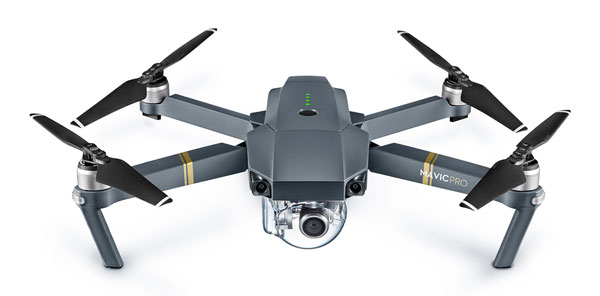
The Mavic Pro also offers far longer flight times than its GoPro rival. Where the Karma drone is said to be capable of a 20-minute flight (with flight conditions undisclosed), DJI says that its Mavic Pro drone can fly for 21 minutes in normal flight while still retaining a buffer of 15% battery remaining, and can hover for as long as 24 minutes in calm conditions. Maximum flight time is said to be 27 minutes with a consistent 15.5-mph wind speed.
And just as we noted in our comparison of the GoPro Karma against the DJI Phantom series, the Mavic Pro looks to be in a completely different class to its rival in terms of range. Where GoPro cites a range of 3,280 feet (0.6 miles), DJI says that the Mavic Pro is capable of an eight mile flight distance in calm skies.
It should be noted that this is the range the drone is capable of flying; its new controller has a range of 4.3 miles when operated under FCC jurisdiction, and 2.5 miles when operating in compliance with CE requirements. GoPro doesn't state whether its own figure is for flight range or controller range, but it's really beside the point, given the vastly greater range for both figures provided by the Mavic Pro.
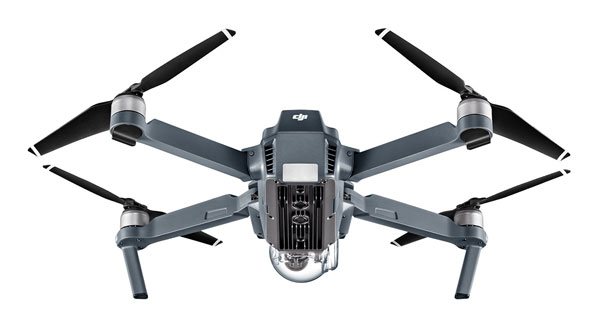
And of course, while performance figures don't tell the whole story, DJI has a decade of experience in the drone market, where GoPro is a upstart with no experience in unmanned aerial vehicles. Hence we'd expect the Mavic Pro to at the very least equal its GoPro competitor in terms of flight dynamics and handling. DJI has also included a raft of tech in its new Mavic Pro aerial platform such as gesture control, an obstacle avoidance system, terrain following capability, and several different styles of subject tracking and following, capabilities which are either missing from or have yet to be detailed by GoPro for its Karma drone.
The Mavic Pro would also seem to have bettered its GoPro rival in the camera department in most respects, on paper at least. Just as GoPro has done with its first drone, DJI has moved the camera to the very front rather than hanging it from the drone's base, in an attempt to keep the propellers out of the field of view. But where GoPro opted for a three-axis stabilized gimbal that can only tilt downwards by 90 degrees, DJI's Mavic Pro gimbal has the same -90 to +30-degree range of motion as in the company's Phantom-series quadcopters.
DJI's camera also looks to be suitably well-specified. Like that of the GoPro Hero5-series (the flagship camera which can be mounted on the Karma drone), it's based around a 12-megapixel CMOS image sensor. And like the Hero5, the Mavic Pro's camera can record 4K video at 24, 25 or 30 frames per second. However, if you're shooting for movie footage, the DJI drone's camera will also offer DCI 4K capture at 4,096 x 2,160 pixels with a fixed 24 fps frame rate, a standard for which the Hero5 lacks support.
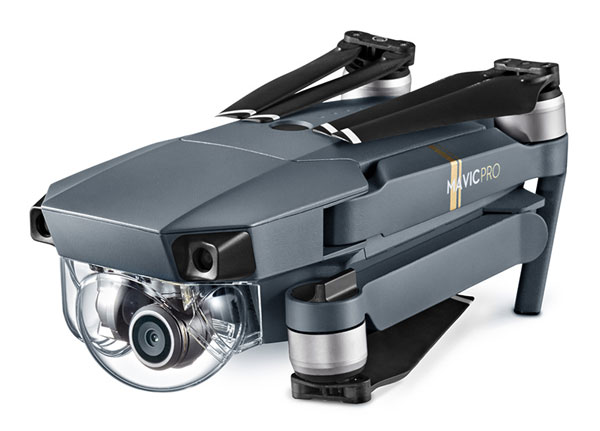
GoPro's standalone camera does, however, best the Mavic Pro for frame rate at a reduced 2.7K resolution, where Mavic Pro still tops out at 30 fps instead of the Hero5's 60 fps maximum capture rate for 2.7K video. And at 1080p or 720p resolution, the Hero5 will manage 120 and 240 fps respectively, where the Mavic Pro will be limited to 96 and 120 fps. And it also offers more interstitial resolution choices, where the Mavic Pro sticks to the basics. So if slow-motion aerial video or matching some specific, less common resolution is your goal, the Karma may better serve you here.
And there are a few additional potential advantages for the GoPro Karma drone's camera setup. For one thing, since it relies on optional GoPro cameras rather than a built-in camera, there's the potential for you to upgrade your drone to provide better-quality images and video footage in the future, assuming GoPro retains the same form factor and mounting style in future Hero-series cameras. And GoPro also includes a gimbal stick with which to shoot stabilized handheld video in the Karma bundle, where to get the same from DJI, you'll need to buy one of its separately-available Osmo-series handheld gimbal systems.
And there's one last important point to consider: The controller. We already mentioned that the DJI Mavic Pro looks to have far greater controllable range than its GoPro rival. It also has a rather more compact controller. As in its DJI Phantom series, it opts to rely on your smartphone or phablet for a live-view video feed, forgoing the built-in, folding screen of GoPro's controller. It's also tiny, by drone controller standards, looking like something akin to a Playstation or XBox controller with folding brackets to hold your smart device in place.
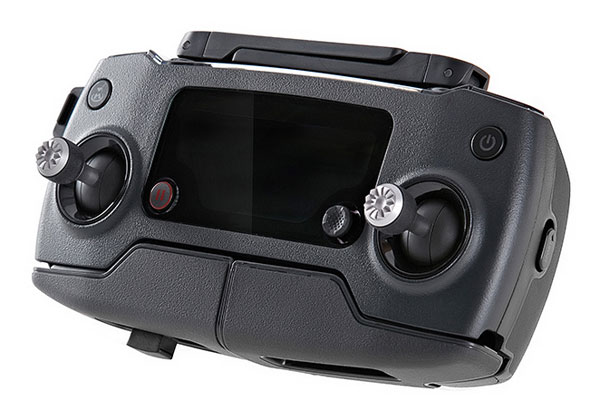
If that's still more gear than you want to carry, you can also control the DJI Mavic Pro entirely from your phone via Wi-Fi. If doing so, you'll control the drone's motion using virtual on-screen joysticks that are overlaid on the live view feed, and you'll also find your flight range limited by your phone's Wi-Fi range. But you'll literally need to bring along no more than just the drone, battery and your smartphone, rather than the backpack of gear GoPro would force you to carry.
If you prefer a first-person view, meanwhile, DJI is also going to allow for that with its new DJI Goggles accessory. Essentially a VR headset which uses the same OcuSync technology that allows for DJI's remote live view feed on your phone, this will apparently have twin 1080p displays, and will allow for the video feed to be shared between two Goggles headsets simultaneously. Pricing and availability for this accessory haven't yet been disclosed, however.
And so we come to the bottom line: How much will you have to pay for the DJI Mavic Pro, and when will you be able to get your hands on one? Pricing for the DJI Mavic Pro is set at US$1,000 or thereabouts, while a "Fly More Combo" bundle will add a second battery, a second set of foldable propellers, a car charger, a charging hub allowing simultaneous charging of four batteries, a power bank adapter allowing you to charge your smart device from the Mavic's battery, and a shoulder bag, all for an extra US$300. How does that compare to the Karma? Well, GoPro's drone is priced at US$800, but that doesn't include the cost of the camera. Add in a GoPro Hero5 Black, and the price is up to US$1,200, making the DJI product about 17% less expensive.
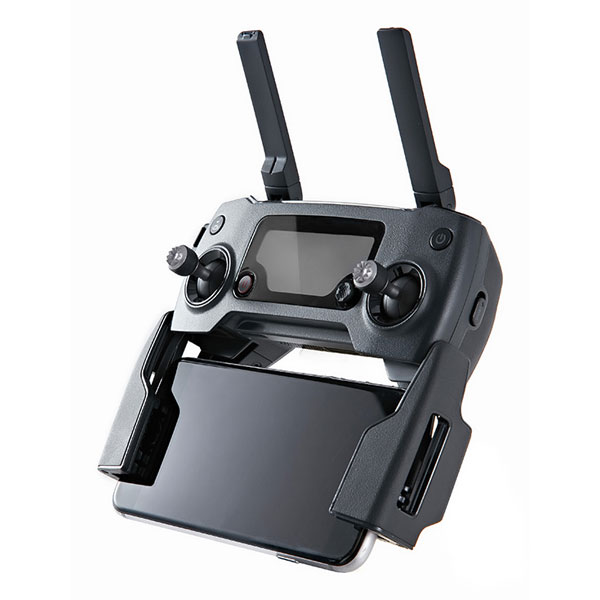
But of course, there's no gimbal grip in the DJI Mavic Pro bundle, so if you fancy yourself as a land-based videographer too, not just an aerial one, you'll need to factor that into the equation. DJI's most affordable handheld gimbal is the standard Osmo, priced at US$570 right now. Add that to the base price of the Mavic Pro, and you're up to around US$1,570, a premium of about 31% over that of the GoPro Karma.
That's a fair bit more money, admittedly, but for that you're getting two complete stabilized camera systems which could potentially be used simultaneously, rather than the single camera system of the GoPro Karma, which must be traded back and forth between drone and handheld gimbal stick. Add a second camera to the GoPro bundle, and you're back to the DJI setup being the more affordable option.
Almost any way you look at it, the DJI Mavic Pro looks to be the better option here. It's far smaller, lighter and more portable, flies further and faster for longer, and looks to offer as good or better potential as an aerial photography platform. And somehow, it does it all at a pricepoint that's actually lower than that of the GoPro alternative, unless you really need that gimbal stick.
Suddenly, GoPro's strategy of jumping into the drone space isn't looking to be such a smart one. We'd imagine there are rather more smiles at DJI headquarters right now than can be found on the campus over at GoPro...